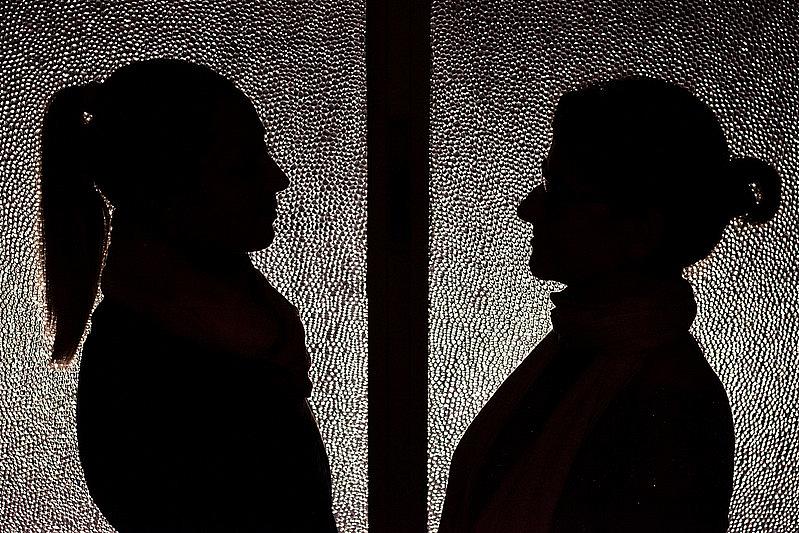Are domestic violence survivors the overlooked victims of COVID-19?
Despite a decrease in reported crimes like robbery and sexual assault, there is at least one category of crime that did see an uptick in reports during COVID-19, one that was inextricably tied to people being trapped in their homes together for months on end, the stress of the economy and unemployment, and the rising substance abuse issues.
In a study published by the American Psychological Association in March 2021, 13% of Americans reported starting or increasing substance use as a way of coping with stress or emotions related to COVID-19, and overdoses increased nationwide in the early months of the pandemic by an average of 18%.
These issues, according to a handful of studies and local Santa Clarita Valley experts on the topic, contributed to the increase in reports of domestic violence starting in March 2020.
In July 2020, I reported that in the first three weeks of July 2020, there were 51 reported incidents of assault related to domestic violence in the Santa Clarita Valley. Over the same period in 2019, there were 32 such reports, indicating a 59% increase.
And the problem was not isolated to the Santa Clarita Valley. Countywide, from Jan. 1 to April 30, 2019, the L.A. County Sheriff’s Department had 863 reports related to domestic violence. In 2020, the number was 933, an increase of about 8%.
“Victims don’t have opportunities in this pandemic, where they’re isolated with the batterer, to even reach out for assistance,” said Krysta Warfield, program manager of the outreach center for the Santa Clarita Domestic Violence Program at the Child and Family Center, in 2020. The moment the stay-at-home order went into effect, Warfield said she had seen an immediate influx in victims calling her from inside a locked car parked in their home’s driveway.
As a court reporter, the increase in domestic violence cases appearing on court dockets transformed my understanding of domestic violence in the 21st century. Advocates not only informed me of the struggles their clients faced in acquiring legal and logistical support from the state, but I also saw firsthand how the system works for these men and women while in the courtroom.
At the trial of Noel “Detail” Fisher, I saw a single domestic violence advocate shuffle between 13 women, over a matter of days, who alleged having been raped by Fisher, a music producer who lived in Stevenson Ranch. Oftentimes during their testimony, where they’re once again face-to-face with their attacker, victims of domestic violence and/or sexual assault are offered a free advocate to stand by their side throughout the courtroom proceedings, explaining certain legal processes to them as well as supporting them mentally and emotionally during their individual testimony.
During the Fisher preliminary hearing last summer, when the victims on the stand required a break, the advocate would stand up and take them into a private room nearby. The advocate —many of which are volunteers and former victims of domestic violence or sexual assault themselves — would follow that Jane Doe into the backroom, leaving behind another Jane Doe that she was sitting next to.
Due to shortages, the advocate told me she would try to ensure that 13 women — should they accept — feel supported as they came to take the stand.
Although Warfield conceded the system before the pandemic was far from perfect, she said the courts — from the number of advocates on staff to the availability of various court administrators and judges on any given day — were not prepared for the large influx of domestic violence suspects and the subsequent need for their alleged victims to quickly request a restraining order.
“What’s happening right now is that there is a delay in the court process,” said Warfield in 2020. “There’s an opportunity for electronic filing and tax filing, but what’s happening is there’s a backlog. Ultimately, before you could just walk into the court if you felt you were in danger and be able to file for a restraining order that same day … and that’s not typically happening now.”
On April 15, 2021, James Dorsey broke into his estranged wife’s home in Santa Clarita — while their three sons slept in their beds upstairs — and waited for Michelle to come in for her morning coffee. When she entered the room, he knocked her to the ground before fatally and repeatedly stabbing her with a knife.
Michelle had for the better part of a year been struggling to maintain the temporary restraining order she had requested in her divorce from James, alleging in the court document that he was regularly physically and emotionally abusive to her. The courts were also unable to quickly process her divorce filing or any type of financial injunctive release, giving her estranged husband an opportunity to continually threaten to sell his share of equity in their house unless she had sex with him during their separation.
For my 2022 California Fellowship project, I’ll seek to report on the issues discussed by Warfield, domestic violence advocates and Michelle Dorsey’s family. Was the system operating adequately before the pandemic struck and the months to follow were simply extraordinary circumstances; or did the pandemic dramatically expose flaws that were already there?
What does the additional trauma experienced by victims of domestic violence mean to their longtime health? Because of the cite-and-release program instituted for jails, suspects of alleged misdemeanor domestic violence would be released from Sheriff’s Stations and back to their home within hours of their arrest.
Did the inevitable quick return for many of the abusers alter a victim’s belief in the system, in safety for their own life?

